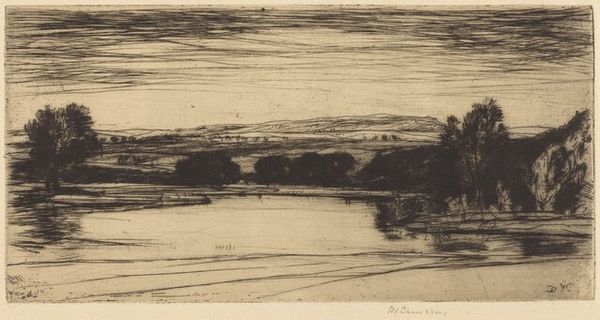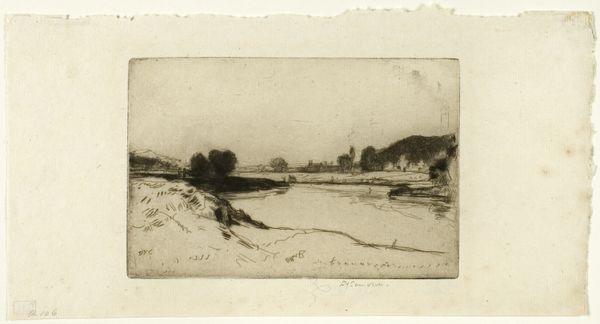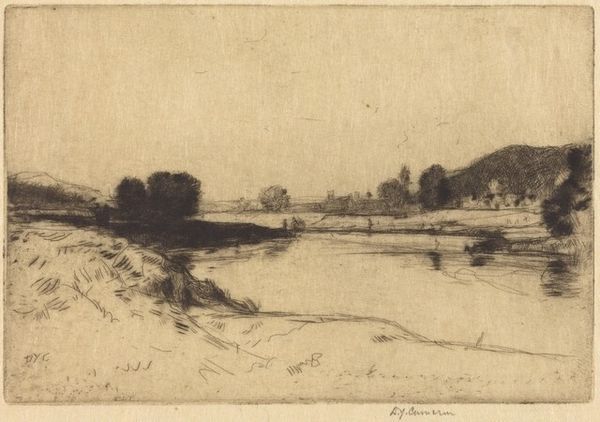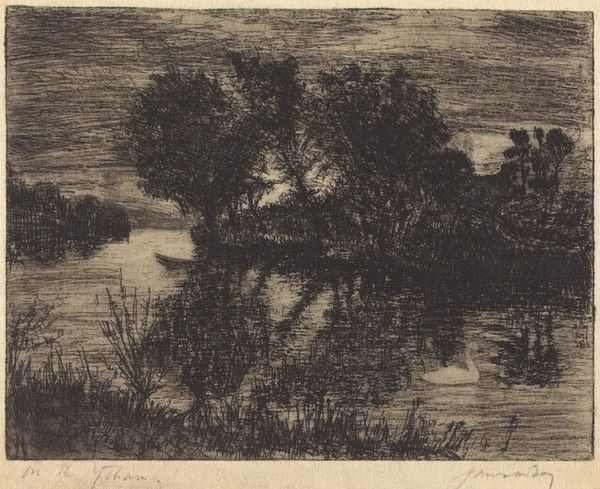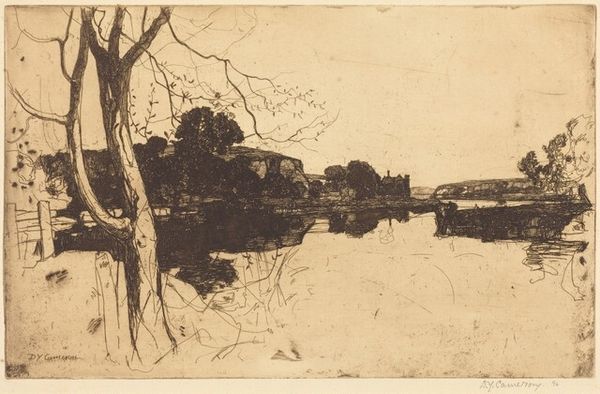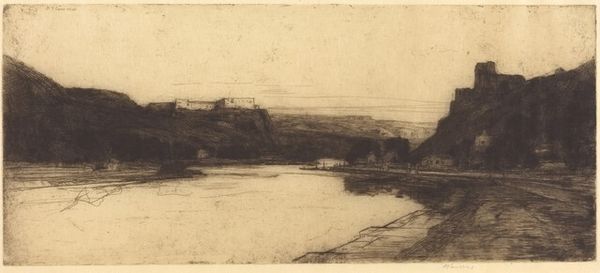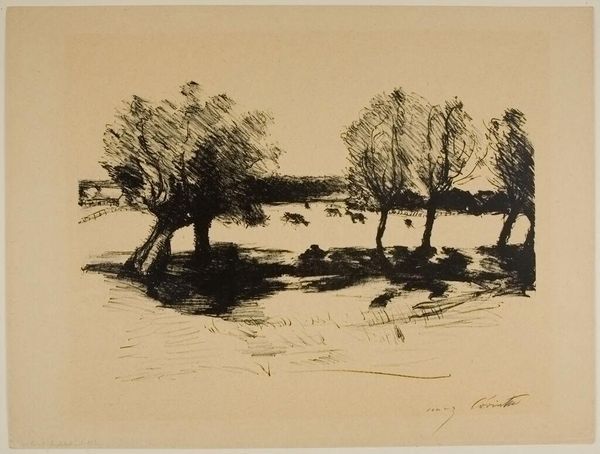
#
pencil drawn
#
amateur sketch
#
toned paper
#
light pencil work
# print
#
pencil sketch
#
incomplete sketchy
#
etching
#
pen-ink sketch
#
watercolour illustration
#
watercolor
Copyright: National Gallery of Art: CC0 1.0
Editor: This is "Tayside," an etching by David Young Cameron from 1890. The first thing I notice is how serene it feels, with the reflections on the water. It's a very detailed, almost photographic, depiction of the landscape. What catches your eye about this work? Curator: The social and historical context are critical here. This etching emerged during a period of intense industrialization and urbanization in Scotland. The stark realities of urban life fuelled a longing for idealized rural landscapes. Note the strategic framing; Cameron subtly directs our gaze *away* from the looming urban skyline, inviting us to consider the gendered and class dimensions inherent to this cultivated scenery, and question who truly profits from this beauty. Do you see this deliberate framing as an escape or perhaps something more critical? Editor: That's a really interesting perspective. I had just viewed it as a beautiful scene, I had not considered Cameron might be pushing back against something. So, the beauty becomes almost a form of resistance? Curator: Precisely. Consider the potential intersections of land ownership, industrial labour, and access to leisure represented in this landscape. The reflection you mentioned-- is it merely aesthetic, or is it mirroring an absence, a loss of something pastoral to urbanization? Editor: I guess it shows how much deeper you can go beyond the surface of a landscape! It gives me a lot to think about. Curator: Art is never created in a vacuum. Thinking about the broader power dynamics and ideologies at play offers profound insights. Editor: Absolutely, thank you!
Comments
No comments
Be the first to comment and join the conversation on the ultimate creative platform.

